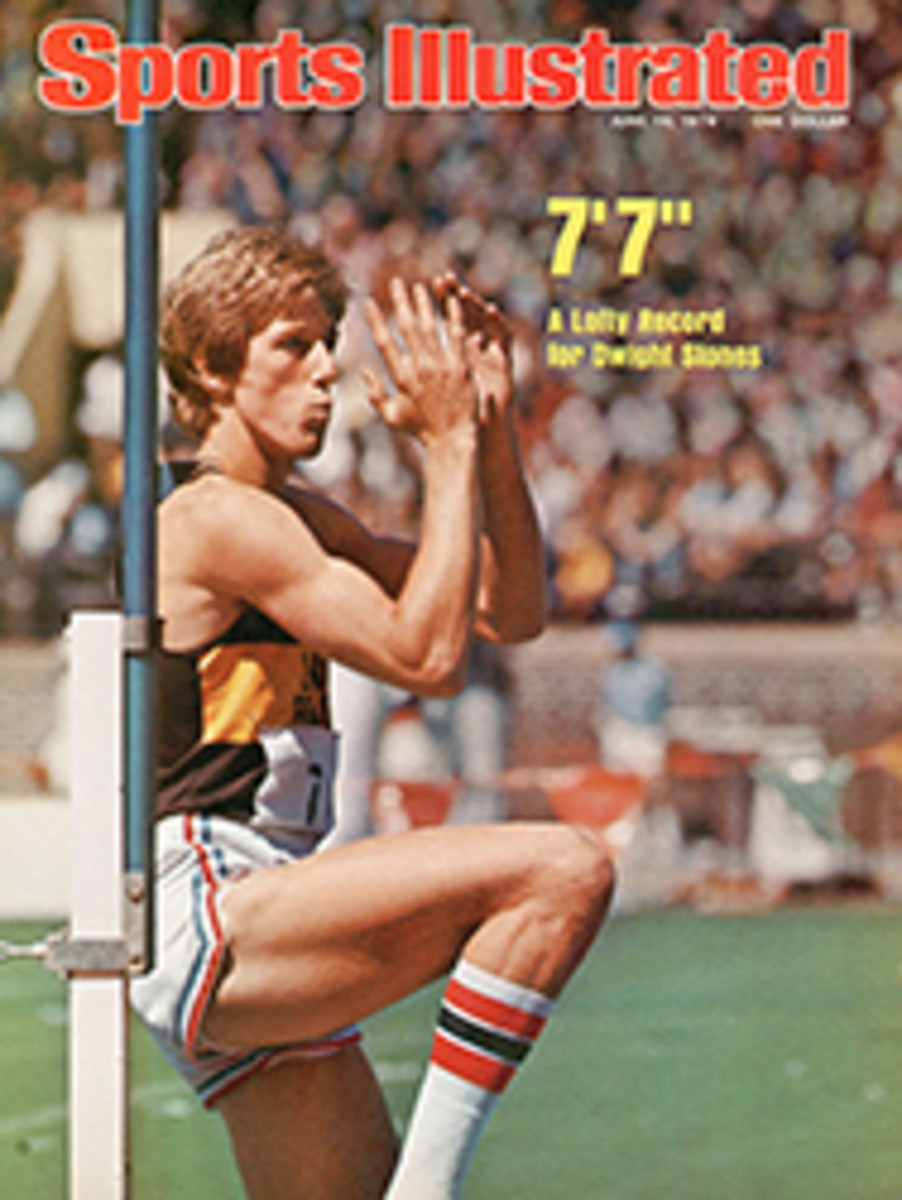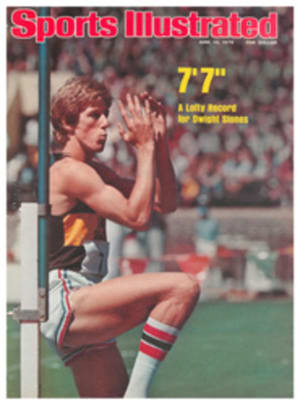
THE COURSE RECORD IS A 30-UNDER 42, BUT THIS IS GOLF PLAYED WITH FRISBEES
"Why did you guys talk when I teed off?" the young man complained as he turned from the fairway. His shot had grazed a stately oak tree and was lying considerably farther from the hole than he had planned. His friends said something like "Big deal," and the threesome continued play on the world's first Frisbee golf course, in Pasadena, Calif. Opened in August 1975, the 18-hole Oak Grove Park course attracts about 1,500 players each weekend and has spawned two more courses in Los Angeles County. If it charged greens fees, you could say the L.A. County Park and Recreation Department has cashed in on a national fad; but, unlike real golf, the Frisbee courses are admission-free.
The course is spread over an area of about 20 acres, has a front and back nine, a par of 72 and cups (actually 25-inch-high baskets on poles that serve as pins). Players must shoot through or around trees, up and down hills and avoid out of bounds—the park roads, picnic tables and 33 other acres of Oak Grove County Park. Basic rules of golf apply, and Frisbee etiquette (whatever that may be) is in force at all times, according to a park information sign. Little diagrams of each hole, listing par, are posted at the tees.
Oak Grove and its two sister courses, La Mirada and Ladera, were the inspiration of Ed Headrick, founder of the International Frisbee Association, former executive of the Wham-O company, which manufactures Frisbees, and a La Cañada resident. He convinced the park department that a Frisbee golf course feasibility study would be worthwhile. The park planner assigned to make the study was 23-year-old Mary Becker, who found the idea not only feasible but nearly perfect. For once, the department received a prospectus that promised an inexpensive, simply installed facility that would benefit thousands. Headrick designed the course for free; equipment and labor cost $2,000.
"We think this is a wonderful idea for public parks. It cuts across age, sex and economic lines," Becker said, surveying the first hole (par-3) of Oak Grove. "College kids and hippie high school types are our biggest group of participants, but all kinds of people who normally don't get involved in recreation come out to play. Since it doesn't cost anything, a whole family can pack a lunch and come out to the park for exercise and fun.
"Except for the course structure, there is no organization. You can play at your own pace and not worry about signing up or reserving time slots, as with tennis courts."
"Ma'am!" a voice boomed from the first tee. Becker instinctively stepped out of the fairway as a Frisbee whizzed by her ankles. The cry may never replace "Fore!" but the message was clear.
According to Becker, the design of a Frisbee course is limited only by the layout of the existing park. "We use older parks because they provide the best natural obstacles, like bigger trees and shrubs," she said. "The idea is to make the course blend in with what's already there and not disturb the other features of the park." In Oak Grove's case, that includes a steep hill covered with rocks, bushes and tree roots on which the fifth and sixth holes are located. A player wearing wedgy sandals might never make it to seven.
Naturally, the idea is spreading. Parks across the country have been in touch with the L.A. department, asking for information so they can set up their own courses, and a booklet to help course planners is being distributed free by the Disc Golf Association, P.O. Box 866, La Cañada, Calif. 91011. "Before Oak Grove, there were lots of temporary courses, set up just for tournaments or by a few people for private play," Becker said. "Ed Headrick and his friends used to map out their own, but if you didn't know their boundaries, it was useless. We wanted people to have something permanent."
Ever sensitive to the wishes of the public, the park department is continually making improvements on the courses. "Everyone says that our pars are too high," Becker said. "We asked a few Frisbee greats, like Headrick, Victor Malafronte and Tom Boda, to play the course and set par, but it looks like we'll have to make the holes harder."
"Yeah, we're not very good and already we're 13-under," a high school type said. (The official course record is a 30-under 42.) "You ought to move some trees or something." The department is also continuing to experiment with hole structure. Originally, all a player had to do to "putt in" was hit a pole, painted international orange. On a 65-yard par-3 hole, even a duffer could envision a birdie. "We changed to these baskets welded to four-foot steel rods," Becker said. Then she asked a player, "How do you like them?"
"They're awful. I can't hit 'em," he said.
"We got more money for design—local businesses are becoming involved—and four more courses are planned," Becker said. "We are also developing a mobile course that can be used in poorer economic areas where kids haven't had the chance to learn the fundamentals of Frisbee. This is really catching on. One of the phys ed classes from La Ca√±ada High School, a block away, comes down here twice a week, and several engineers from the NASA jet propulsion lab come over on their lunch hours.
"We've seen ancient Frisbees appearing on the course, which shows that people's interest in the game has been renewed, and some players use more than one size Frisbee for tricky shots."
A member of a threesome who was "out of work, so I play every day," discussed the infinite possibilities of Frisbee courses. "Man, if you put in lights or water hazards and charged people, you could make a fortune," he said. "People would pay to do this." Another man, who was wearing a Budweiser T shirt, shook his head and said, "No they wouldn't." "You wait and see in the next few years," said his friend.
You could almost see Clifford Roberts presenting an international orange blazer to the winner.

